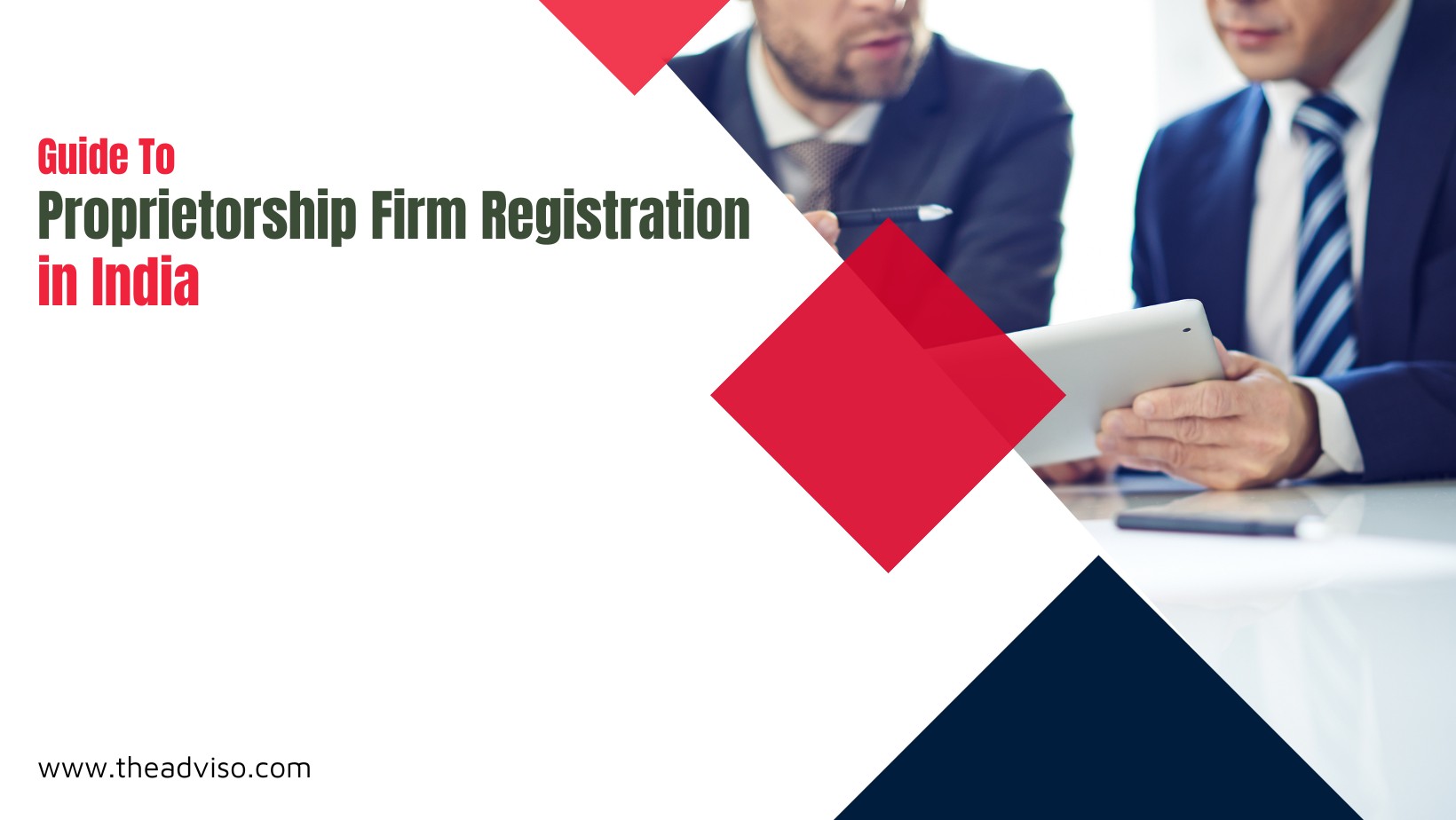Proprietorship Firm Registration
A sole proprietorship is a form of business run by a single owner. From addressing registration formalities to staying compliant with tax norms, every aspect of this business model is handled by a single person. Ideally suited to smaller businesses, the sole proprietorship model attracts minimal compliance for incorporation. Some common benefits this business model yields include zero intervention of any third party, utmost management control to the owner, access to 100% profit, etc. Applying for proprietorship firm registration is not akin to applying for other structures. This blog unveils norms, paperwork, and processes concerning this business model.
Taking a closer look at sole proprietorship business model
A sole proprietorship business model doesn’t fall under any legislation or governing authority, making it vulnerable and unstable. Albeit it offers complete control to the owner, it attracts unlimited liability and fails to reinforce a separate legal identity.
These gaps can make this model less credible among investors and financial institutions. However, there are some bright sides as well. It is an ideal structure for those who want to keep things to themselves while running operations. There is no dent to profit since it entirely belongs to the owner.
A sole proprietorship is a perfect fit for businesses belonging to retail and commercial settings. These include parlors, grocery stores, boutiques, etc. This structure allows an owner to team up with an ally to oversee operations without affecting its ownership.
The well-being of the owner has everything to do with the continuity of this business model. The untimely demise, departure, and financial crises can lead to the unexpected closure of this business model.
The choice to select this business model depends on your requirements. If you have a moderate staff and want clarity in management, you must choose a better alternative like a partnership firm, LLP, or OPC. Similarly, if you like to go solo and seek the utmost control over operations and profit, you can opt for proprietorship firm registration.
With that being said let’s take a quick glance over the pros and cons of this business model.
Check out our web stories: Top 6 benefits of establishing a sole proprietorship
Reasons to apply for proprietorship firm registration
Despite feeble structure and unlimited liabilities, the proprietorship firm model offers a handful of benefits to the owner. Some of the key pros include:
Less compliances
Since the proprietorship firm model does not fall under any legislation or governing authority, compliances for running this business model is relatively lesser than counterparts like OPC and private limited company. There is no need to hold meetings, appoint directors, or undergo audits. A sole proprietorship is a boon for entrepreneurs who wish to stay away from overwhelming compliances.
Utmost control to the owner
The sole proprietor yields 100% management control to the owner, obliterating any chance of being intervened by any third person.
Seamless decision making
The sole proprietor sees no restriction when making important business decisions. Legally, no one can challenge owners’ decisions. The owner has complete authority in this context, ensuring swift and hassle-free decision-making.
Reasons to Avoid the Sole Proprietorship Registration
Freedom to handle business affairs with utmost control is one big benefit of this structure. But it is a highly feeble and vulnerable model from a stability standpoint since it adheres to the following cons:
Unlimited liability
With profit comes losses too. The owner of this business model has to address them with no exceptions. Burdening owners with unlimited liabilities is one of the prominent pitfalls of this business model. While addressing the losses or debts, the owner’s assets may be used for recovery.
No perpetual succession
The continuity of this business model stays intact as long as the owner lives. The proprietorship firm can experience unexpected closure in daunting scenarios, leaving customers, staff, and vendors helpless.
Low credibility among banks
The unstable and feeble structure of the proprietorship firm limits its options to raise funds for growth. The bank and other private lenders are less likely to grant credit to such entities because there is no assurance of how long they will last.
Sole Proprietorship Registration: A 4 Steps Guide
Applying for a sole proprietorship firm registration simply means following the given steps:
Step 1: Secure a PAN card
PAN i.e. Permanent Account Number is equivalent to a Social Security Number issued in the US. It is the only valid document reinforcing the individual or entity’s identity. You can visit government portals like UTIITSL or the National Portal of India to apply for the PAN.
Step 2: Open a current bank account
Once you have secured the PAN, the next step is to open a current account in a designated bank. The common documents required to meet this purpose include PAN, owner’s identity proof, business details, premises paperwork, etc.
Step 3: Obtain a Shop Act license
This step requires reaching the local body and securing a shop act license. This legal approval is mandatory for entities serving the commercial and retail sectors.
Step 4: Register under GST
GST registration is mandatory for entities with annual turnover over Rs 20 lacs. You can visit the official GST portal to apply for this registration. The documents required to apply for GST include a business certificate, bank account details, owner’s ID, etc.
Documents Consideration for the Sole Proprietorship Registration
Keep the following documents handy before you strive for the Sole Proprietorship Registration:
- Proof of registered office.
- Aadhaar card.
- Business bank account.
- Checklist for Sole Proprietorship
- Proprietor’s PAN card.
- Business name and address.
- Business bank account.
- GST registration
- Registration under the state’s Shop and Establishment Act.
- Proprietor’s PAN card.
Compliances for running a Sole Proprietorship business
As a sole proprietor, abiding by the tax norms should be the utmost priority of the owner, be it TDS or GST. The owner is liable to deduct TDS to stay compliant. Likewise, the owner must address tax obligations under GST as and when required to stay penalty-free. If the owner files the TDS return, he/she undergoes a tax audit as a part of compliance.
Conclusion
Proprietorship Firm Registration plays a vital role in legalizing entities run by a single owner. Applying for this registration simply means securing a PAN, opening a bank account, and registering under the Shop Act.
Read Our Article: Section 8 Company Registration: All You Need To Know




